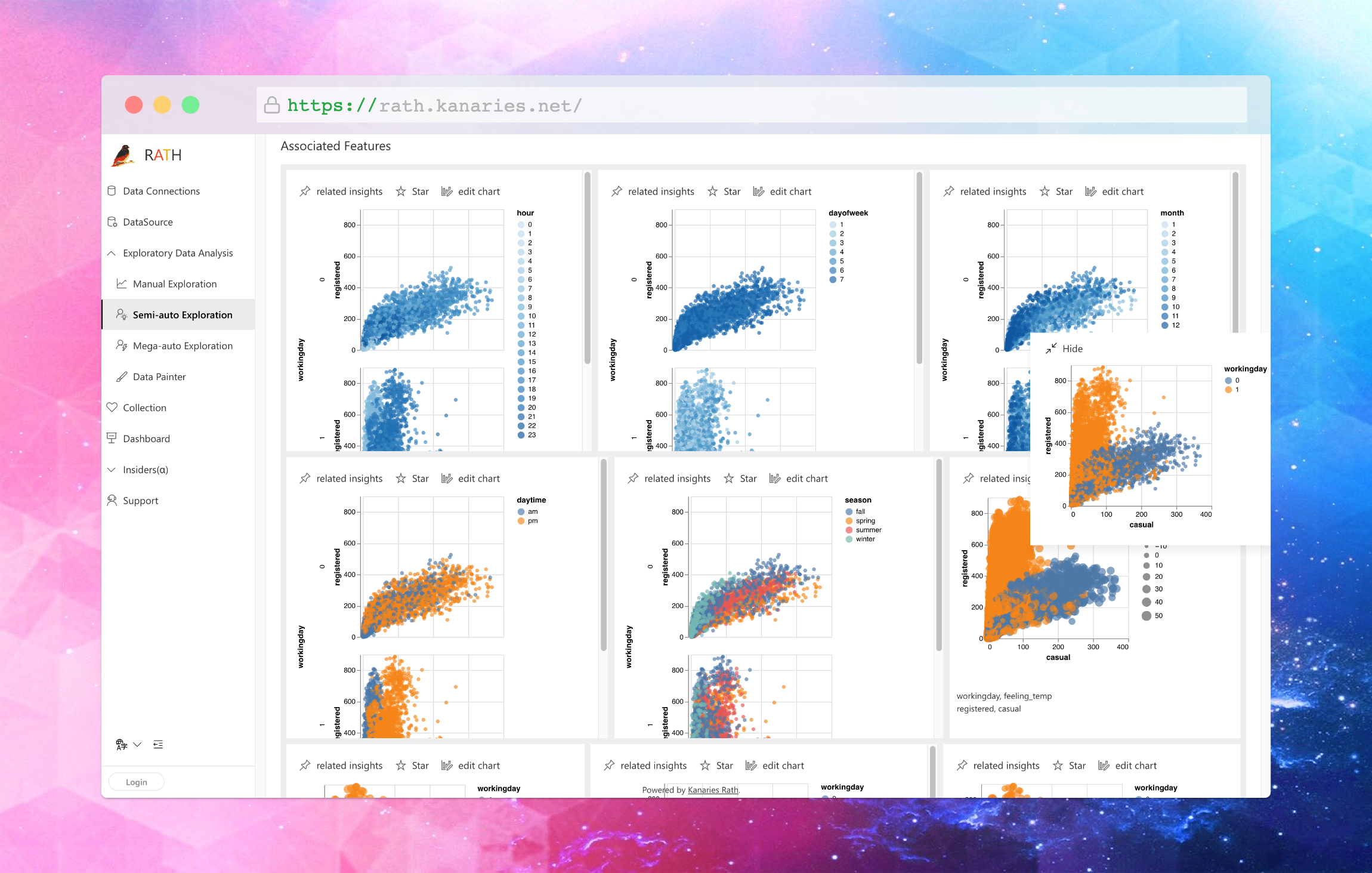PyTorch vs TensorFlow - Is PyTorch 2.0 the Game Changer?
Updated on

Introduction
PyTorch and TensorFlow are both open-source deep learning frameworks that provide developers with the tools to build and train machine learning models. Both have their pros and cons, and the choice between the two depends on the specific needs of the project. With the recent release of PyTorch 2.0, many are wondering if it can outperform TensorFlow and become the new standard for deep learning.
RATH: the Open Source Alternative to PyTorch & TensorFlow?
Besides Deep Learning Frameworks like PyTorch or TensorFlow, you can also try out an Open Source, Automated Augmented Analytics tool for Data Exploration and Data Visualization.
RATH (opens in a new tab) is the suggestion we are making here. It uses a User-friendly Interface, with a Fully Automated Data Analysis & Visualization capacity to get One-Click Insights from your data source.
Speaking about the Data Source, you can plug in RATH into the computing power of ClickHouse Clusters, or connect to other popular online databases such as BigQuery, Snowflake, MySQL, Amazon RedShift, etc.
RATH is Open Source and available on GitHub (opens in a new tab). You can try RATH Online Demo (opens in a new tab) for a taste of its advanced features.
PyTorch 2.0 Features
PyTorch 2.0 comes with a host of new features that make it more appealing to developers. Here are some of the most notable features:
-
Improved performance: PyTorch 2.0 offers improved performance, making it faster and more efficient than its predecessor.
-
Apple Silicon support: PyTorch 2.0 supports Apple Silicon, making it compatible with the latest Mac devices.
-
MPS support: PyTorch 2.0 also offers support for MPS (Memory Pooling System), which can significantly reduce the amount of memory required for training.
-
Transformer improvements: PyTorch 2.0 includes a new transformer module that provides more efficient and flexible training of transformer-based models.
-
Hugging Face integration: PyTorch 2.0 integrates with the popular Hugging Face library, providing access to pre-trained models and a range of useful tools.
PyTorch 2.0 vs. TensorFlow
Now, let's compare PyTorch 2.0 with TensorFlow and see how they stack up against each other.
-
Performance: PyTorch 2.0 offers improved performance, making it faster and more efficient than its predecessor. However, TensorFlow still outperforms PyTorch 2.0 in terms of speed and memory efficiency.
-
Ease of use: PyTorch is known for its ease of use and intuitive API, making it a popular choice among developers. TensorFlow, on the other hand, has a steeper learning curve but offers more flexibility and customization options.
-
Community support: TensorFlow has a larger and more active community than PyTorch, which means that there are more resources available for developers. However, PyTorch's community is growing rapidly and has a strong presence on platforms like GitHub and Reddit.
-
Integration with other libraries: Both PyTorch 2.0 and TensorFlow are powerful deep learning frameworks with their own strengths and weaknesses. PyTorch 2.0 is known for its flexibility, ease of use, and compatibility with other libraries such as NumPy and Hugging Face Transformers. It also has an active community known for producing high-quality tutorials and documentation.

On the other hand, TensorFlow has the advantage of being developed by Google, giving it access to resources such as Google Cloud and TPU. It is known for its high performance and scalability, making it a great choice for dealing with large datasets. TensorFlow also has popular tools and libraries such as Keras, and integrates well with other libraries like Pandas and Scikit-learn.
Conclusion
PyTorch 2.0 is the latest release of the popular deep learning framework and brings several new features and improvements. One of the most significant changes is the introduction of a new TorchScript compiler, which allows developers to optimize and export PyTorch models for deployment on various platforms
